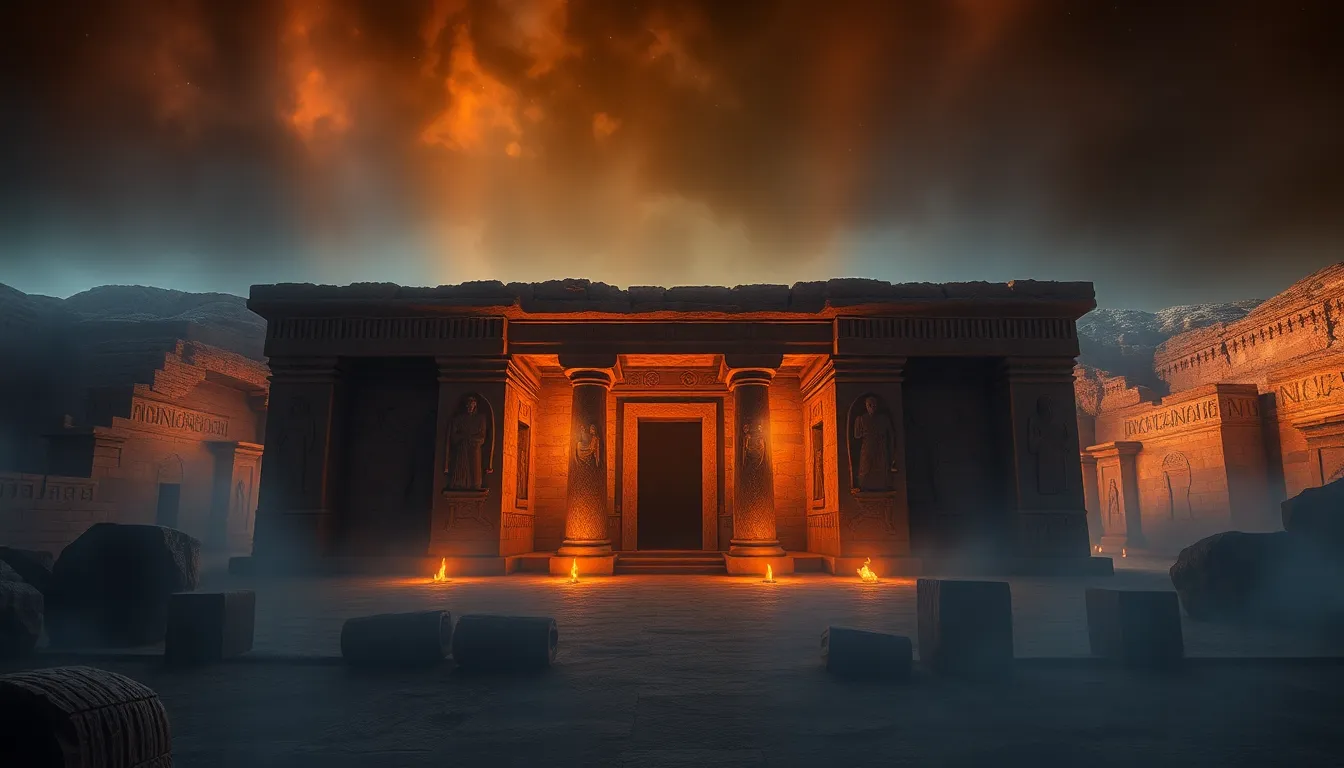The Pharaoh’s Curse: Myths That Haunt Ancient Tombs
I. Introduction
Ancient Egyptian tombs are not merely final resting places; they are intricate structures laden with symbolism, history, and the beliefs of a civilization that thrived for millennia. These tombs were designed to ensure a safe passage to the afterlife, reflecting the Egyptians’ profound respect for the dead and their journey beyond this world.
Intriguingly, alongside the reverence for the deceased, a darker narrative has emerged over the years—the concept of the Pharaoh’s Curse. This idea suggests that those who disturb the resting places of ancient Egyptian royalty will face dire consequences. In this article, we will explore the origins, famous tales, scientific explanations, and cultural impacts of this enduring myth.
II. The Origins of the Pharaoh’s Curse
The notion of curses in ancient Egypt dates back to the very practices surrounding burial and the afterlife. Curses were often inscribed within tombs to protect the deceased from thieves and those who would disrespect their resting place.
- Historical Context: Curses were common in the inscriptions found in tombs, warning of divine retribution for those who dared to enter.
- Documented Instances: Many tomb inscriptions include phrases like “Death shall come on swift wings to those who disturb the peace of the pharaoh.”
- Superstition: The ancient Egyptians held a robust belief in the supernatural, with gods and goddesses actively engaging in the affairs of mortals.
III. Famous Tales of the Pharaoh’s Curse
One of the most notorious examples of the Pharaoh’s Curse is associated with the tomb of Tutankhamun, discovered by Howard Carter in 1922. The subsequent deaths of several individuals involved in the excavation fueled the myth.
- The Curse of Tutankhamun: Following the tomb’s opening, several people, including Lord Carnarvon, who financed the expedition, died under mysterious circumstances, leading to widespread speculation about a curse.
- Other Notable Tombs: Similar stories surround the tombs of other pharaohs, including Ramses II and Seti I, where inscriptions warned of dire consequences for intruders.
- Public Imagination: These tales have captivated audiences, leading to a proliferation of books, documentaries, and films centered around the theme of ancient curses.
IV. The Science Behind the Myths
While the stories of curses are compelling, there are scientific explanations that can account for the incidents attributed to them. Many tombs contain environmental hazards that may pose health risks to explorers.
- Environmental Hazards: Tombs can harbor mold, bacteria, and toxic gases, which could lead to illness.
- Archaeological Findings: Studies of tombs reveal that those who entered without proper precautions were at risk of exposure to harmful substances.
- Coincidence and Human Error: Many of the supposed curse-related deaths can be attributed to accidents or pre-existing health conditions.
V. The Curse in Popular Culture
The Pharaoh’s Curse has permeated popular culture, influencing films, literature, and even tourism. The portrayal of ancient Egypt often emphasizes the mystique surrounding curses, leading to a blend of fact and fiction.
- Films and Literature: Movies like “The Mummy” and countless novels have romanticized the idea of cursed tombs, captivating audiences with thrilling narratives.
- Tourism and Public Interest: The allure of the curse has driven many to visit Egypt, seeking to experience the mysteries of the ancient world firsthand.
- Fact and Fiction: The blending of historical facts with fictional elements has created a captivating yet distorted understanding of ancient Egyptian culture.
VI. The Psychological Impact of the Curse
The myths surrounding the Pharaoh’s Curse evoke a complex interplay of fear and fascination, deeply rooted in human psychology. The narrative of a curse taps into primal fears of death and the unknown.
- Fear and Fascination: The idea of curses resonates with our innate fears of the supernatural and the consequences of our actions.
- Influence on Archaeologists: Many archaeologists and explorers have reported feeling a sense of dread or caution when entering tombs, influenced by the lore surrounding them.
- Media’s Role: Media portrayals often amplify fears, perpetuating the myth of the curse and its consequences.
VII. Debunking the Myths: Expert Opinions
Historians and archaeologists have sought to debunk the myths surrounding the Pharaoh’s Curse, emphasizing the importance of separating fact from fiction.
- Insights from Experts: Many experts argue that the deaths associated with tomb discoveries are often misattributed to curses, citing health risks and accidents as more plausible explanations.
- Modern Interpretations: Contemporary scholars advocate for a rational understanding of ancient inscriptions, viewing them as cultural artifacts rather than literal threats.
- Importance of History: A nuanced understanding of ancient culture enriches our appreciation of history, moving beyond sensationalism.
VIII. Conclusion
In summary, the Pharaoh’s Curse embodies a rich tapestry of ancient beliefs, modern interpretations, and cultural narratives. While deeply entrenched in myth, the curse serves as a fascinating lens through which we can explore the complexities of ancient Egyptian culture.
Reflecting on these myths allows us to understand the allure they hold in contemporary society. As we navigate the realms of history and mythology, it becomes crucial to discern the reality behind the stories, fostering a greater appreciation for the rich heritage of ancient Egypt.




